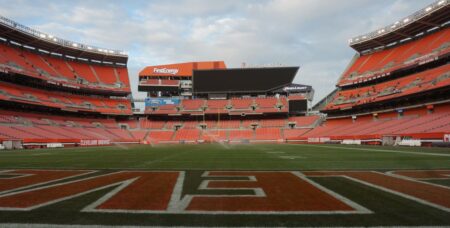The Mayor of Florence, Dario Nardella, has hit out after it emerged that the European Commission is challenging the Italian Government’s proposed usage of money from the bloc’s COVID-19 recovery fund for the redevelopment of the Stadio Artemio Franchi, along with stadium and arena projects planned for Venice.
The European Union’s Recovery and Resilience Facility is designed to mitigate the economic and social impact of the pandemic and make European economies and societies more sustainable, resilient and better prepared for the challenges and opportunities of the green and digital transitions.
The Facility allows the Commission to raise funds to help member states implement reforms and investments that are in line with the EU’s priorities and that address the challenges identified in country-specific recommendations under the European Semester framework of economic and social policy coordination. It makes available €723.8bn (£636.1bn/$785.6bn) in loans (€385.8bn) and grants (€338bn) for this purpose.
Italy is the largest beneficiary of these funds amongst the bloc and initially requested the release of the third tranche of funds, €19bn in grants and loans subject to meeting 55 conditions, at the end of last year. The Commission’s assessment period has already been extended once, until the end of March, but a new deadline has now been set of the end of April in order to resolve remaining issues.
There are three core sticking points, according to the Italian Government – port concessions, eligibility of investments into district heating networks and the proposal to direct funds towards the two venue projects.
The Italian Government said in a statement: “The Government will provide further information to support the eligibility of all these projects, in particular those included in the Integrated Urban Plans for Venice and Florence. The Government will continue to constructively work with the European Commission to ensure the successful completion of assessment activities.”
Specifically, Italy’s proposal is to use €55m of EU money for the revamp of the Stadio Artemio Franchi, with a further €93.5m heading towards the project in Venice.
It emerged last week that Serie A football club Fiorentina will require a temporary home for two seasons whilst the €193.4m redevelopment of the Franchi takes place. The Municipality of Florence owns the historic stadium and is leading its renovation project. In March 2022, the Italian division of engineering and design consultancy Arup was selected to lead the revamp, securing the architectural and multidisciplinary design contract.
The City of Venice in December launched a tender process after approving investment in April of €283.5m in a project that will be underpinned by a sports complex featuring a new 16,000-seat stadium for Serie B football club Venezia, plus a 10,000-seat arena.
The Municipality of Venice earlier unveiled plans for a €333.8m investment scheme. The funding will be distributed for ventures across the local region, with its driving force being the ‘Bosco dello Sport’ project.
The Commission is concerned whether the projects fit with the recovery plan’s goal to “regenerate, revitalise and enhance large degraded urban areas.”
Politico, citing EU officials, said the Franchi, built in the fourth most expensive neighbourhood in central Florence, doesn’t fit the bill, while designating Venice’s greenfield site an urban regeneration project is also said to be a leap too far.
The redevelopment of the Franchi is a pet project for Nardella, who issued a strong response to the latest developments yesterday (Tuesday). He stated that all projects under Italy’s National Recovery and Resilience Plan (PNRR) shouldn’t be recognised, if the Florence and Venice schemes do not pass muster.
Nardella told reporters: “Italy must do everything to be respected and we expect the utmost commitment from the Government. It is worth saying once again for the umpteenth time that the Franchi stadium is a unique case in Italy and in Europe, and it cannot in the slightest be compared to any other Italian or European football stadiums, excepting the Flaminio in Rome which shamefully has been abandoned for years.
“The Franchi stadium is a national monument and a public asset and belongs to the Municipality and Florentines. I think it is elementary to ask for public funding for a public good. Once the state constraints were put in place by the then Draghi government, it was clear to everyone that any private intervention on the Franchi stadium would have been impossible.
“What was the alternative? Leave the Franchi abandoned? The real shame is seeing an abandoned stadium like the Flaminio in Rome that bears the same signature as (architect Pier Luigi) Nervi. I will fight tooth and nail for the Franchi to be redeveloped and not abandoned.”





